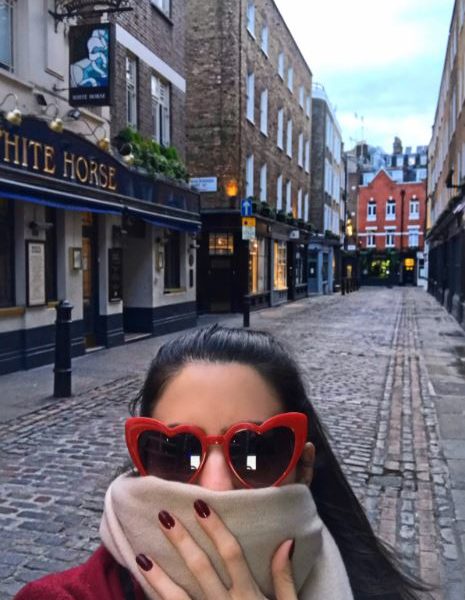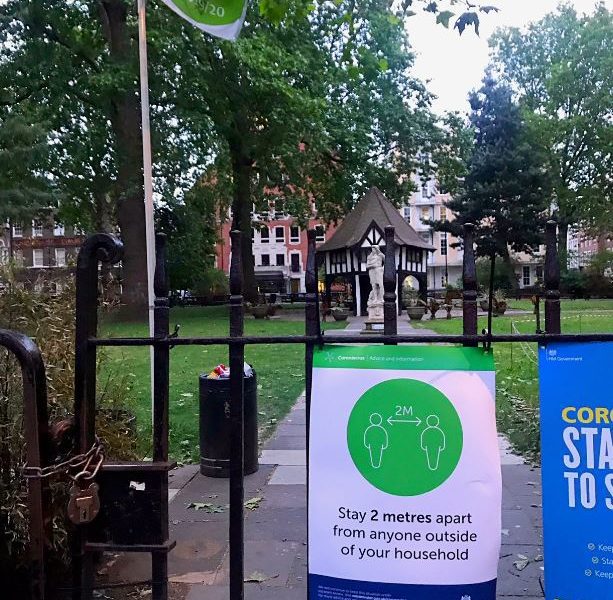Worldwide Pandemic Diaries
Worldwide Pandemic Diary — London
As part of our continuing series of “Pandemic Diaries”, we publish situation reports from our colleagues and correspondents all over the world. In this latest diary, we hear from Candice Zieger, who is an American expat and media executive at a movie studio in London. She moved to London about three years ago from her home in Washington, D.C.

London has been a very resilient city during this pandemic. It was one of the hardest hit in Europe, which put great pressure on the NHS (National Health Service) to try and manage the situation from escalating. Now it has seen significant improvement. We have passed our curve and cases a day are steadily dropping. Still, there are strict rules in place and work-from-home is still the norm for most businesses.
Traveling in the UK is restricted as the government has advised against all non-essential travel and instructed that UK citizens remain at home as much as possible. If you must make an essential journey, you have to avoid traveling on public transport at peak times and wear a face covering. Public transport is only for essential travel. Whereas before we were only allowed an hour a day to go outside, we are now allowed outside, but we have to follow strict distancing rules.
Airports and local public transport at this time are functioning but at a reduced capacity. Two major tube lines, Waterloo and City, remain closed, and there is no Night Tube or Night Overground service. This means there is also a longer wait time as there are fewer trains running. However, this has resulted in an increase in cycling. You can see in the streets more bikes than ever before. Over the weekends, parks and streets are filled with Santander Cycle bikes, which you can pick up at any docking station at the cost of £2 (about $2.50) for unlimited journeys up to 30 minutes, and £2 for each additional 30 minutes.
Transport for London recently announced that wearing non-surgical masks will be compulsory on public transport in England from June 15, and free masks will be available at five key stations: Seven Sisters, Brixton, Stratford, Baker Street, and Paddington. It is expected that starting around that time, there will be a big uplift of people using public transport, as Prime Minister Boris Johnson is allowing those who cannot work at home to go back to the office. This measure, along with the dropping number of cases, show signs of hope and improvement in England’s fight with COVID, and that the measures put in place early on were necessary. People are more optimistic and are slowly getting back to their old routines, as you can see the streets come alive more and more each week.
The UK government currently has a ban on public gatherings of more than two people, and when you go outside, you must keep a safe distance of 6 feet (2km) from other people. My local park of Soho Square has signs on every entrance that state this rule, and people have been following it. However, at larger parks, like Hyde Park or St James, you can see larger groups of friends gathering and sitting in the grass chatting as if nothing is wrong. The government said it could close the parks if people did not follow the rules, but there seems to be an issue with enforcing this rule in such places.
My routine during this lockdown has been rolling out of bed 15 minutes before work, working on my laptop alternating between the desk and the bed until 5pm. I’ll have a few Zoom meetings during the day, and by this point has become a new normal. After work, I’ll get groceries at my local Sainsbury at Oxford Street, which lets in only a few people at a time. At the beginning of the lockdown, there was a shortage of soap, toilet paper, and flour, but the stores are fully stocked now that the panic-buying has subsided. Then I’ll walk back home and I’ll see only a handful of people in the streets. It is very surreal seeing these areas of the city that were always bustling with people, now be eerily quiet and still.
As summer approaches, the sun has brought a feeling of hope to Londoners. After enduring winters where the sun sets at 4pm, we now have long afternoons of sunshine where the sun sets late at 9pm. This is very much needed for us and it definitely lifts our spirits. In spring and summer, London is at its most vibrant and beautiful, with English roses blooming and a summer breeze from the Thames River sweeping the city, you can feel London come to life.
Everyday at 8pm, you can hear clapping for the NHS. I peak out my window to clap and see all my neighbors cheering, capping and sounding their pans to lift the neighborhood’s spirits and show gratitude to our workers. I have a NHS worker that lives in my building, and we were all notified that they have contracted COVID. So when we cheer in our building, we do so even more earnestly because we have among us one of the selfless warriors that have put themselves in the front lines.
This feeling of unity is very much felt across the city and the country. When both Prince Charles and Boris Johnson tested positive, it was a shifting moment for us, a scary moment where we realized this really could happen to anyone, no matter where you live or how untouchable you might seem, and we have to fight this together. This is why we are so grateful for the NHS. The NHS really is one of the greatest parts about living in England. It is such a privilege we get to have state healthcare that anyone can access, and now more than ever, we are so appreciative of the system and those who have made it their life calling to help others.
The bleakness of the colder days of the lockdown has faded. The sunshine and blooming nature has lifted people’s morale. The streets are not as empty as they used to be, and local businesses are opening for delivery-only —such as Soho staple Hobsons’s Fish and Chips, one of many symbolic scenes of British resilience. There is a sense of hope and promise, and as the number of cases drops each day, we hope to try to stay positive and be the resilient city London is.













